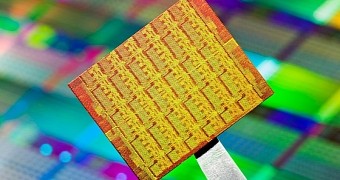Intel announces a new line of desktop and mobile CPUs that are based on recently launched Skylake microarchitecture. Seen as the successor of both Broadwell chips and Skylake CPUs, it's manufactured on 14nm technology, having better per-clock performance, more video formats and faster PCI-Express and DMI interfaces to the chipset.
Besides that, the single most important addition of the Skylake processors and its Z170 chipset is the new DDR4 standard memory. After the first Skylake K models initially launched, 46 others have followed, 18 of those being built for the new LGA1151 socket.
Quite similar to the Haswell desktop CPUs, the Skylakes will use the same branding names for the performance segment. Apparently, for the low end Intel will offer Pentium and some undisclosed Celeron products, while the mid- and high-end CPUs will carry the Core i3, Core i5 and Core i7 brands, which will use i3-6xxx, i5-6xxx and i7-6xxx model numbers.
Just like the first K models, the digit "6" in the model number stands for 6th generation Core architecture. And just like the K models, some CPU's will use the "K" suffix to indicate that they are unlocked and oveclockable, while the lowe power models can be identified by the "T" suffix. However, all mainstream Skylake CPUs will have 65 Watt TDP, except the T models obviously, so Intel decided to drop the "S" suffix that indicated the 65 Watt power rating.
The same powerful Skylake-S models, but without the "S"
The Skylake Pentium CPUs will be available in two variations, the less expensive G4400 series with basic Pentium features, and the higher clocked and expensive G4500 series. According to CPU World, a new feature in latter products is the GT2 GPU that comes branded as HD 530. Surprisingly, Intel decided to have Haswell and Skylake Pentium CPUs with the same CPU frequencies, but with Skylakes having lower clocked GPUs by 50MHz-150MHz.
Except that, Haswell and Skylake Core microprocessors will have the same core counts, caches and supported technologies, with the most differences coming for GPU and CPU clocks.
The Core i5-6400, i5-6500 and i7-6700T have 100 MHz - 300 MHz lower maximum Turbo frequencies, and 28% - 33% lower TDP than their Haswell and Broadwell predecessors which should count for something when users decide to buy them. But the TDP does come at a natural cost with lower base frequencies for the Core i5-6600 and i7-6700 than the previous models.
| CPU Model (vs old model) | CPU MHz | Turbo MHz | Graphics | Base GPU MHz | Max GPU MHz | Memory | TDP |
|---|---|---|---|---|---|---|---|
| Pentium G4400 (G3260) | -50 | +DDR3L-1600 +DDR4-2133 |
-6W | ||||
| Pentium G4400T (G3260T) | -150 | 150 | +DDR3L-1600 +DDR4-2133 |
||||
| Pentium G4500 (G3460) | +GT2 | -50 | +DDR4-2133 | -6W | |||
| Pentium G4500T (G3460T) | +GT2 | -150 | 150 | +DDR4-2133 | |||
| Pentium G4520 (G3470) | +GT2 | -50 | +DDR4-2133 | -6W | |||
| Core i3-6100 (i3-4170) | -100 | +DDR4-2133 | -7W | ||||
| Core i3-6100T (i3-4170T) | -200 | 150 | +DDR4-2133 | ||||
| Core i3-6300 (i3-4360) | 100 | +DDR4-2133 | -7W | ||||
| Core i3-6320 (i3-4370) | 100 | +DDR4-2133 | -7W | ||||
| Core i3-6300T (i3-4370T) | -200 | 150 | +DDR4-2133 | ||||
| Core i5-6400 (i5-4460) | -500 | -100 | -150 | +DDR4-2133 | -19W | ||
| Core i5-6400T (i5-4460T) | 300 | 100 | -150 | +DDR4-2133 | |||
| Core i5-6500 (i5-4590) | -100 | -100 | -100 | +DDR4-2133 | -19W | ||
| Core i5-6500T (i5-4590T) | 500 | 100 | -50 | +DDR4-2133 | |||
| Core i5-6600 (i5-4690) | -200 | -50 | +DDR4-2133 | -19W | |||
| Core i5-6600T (i5-4690T) | 200 | -100 | +DDR4-2133 | -10W | |||
| Core i7-6700 (i7-4790) | -200 | -50 | +DDR4-2133 | -19W | |||
| Core i7-6700T (i7-4790T) | 100 | -300 | -100 | +DDR4-2133 | -10W |

 14 DAY TRIAL //
14 DAY TRIAL //